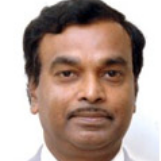
Prabhakara Rao. B
Work place: JNTUK, Kakinada, 533003, India
E-mail: drbpr@rediffmail.com
Website:
Research Interests: Signal Processing, Communications, Wireless Communication, Wireless Networks
Biography
Prabhakara Rao B: Has more than 28 years of experience in teaching and 20 years of R & D. He is an expert in Signal Processing & Communi-cations .He produced 5 PhD’s and guiding 25 PhD scholars. He held Head of the Department, in JNTU College of Engineering. Presently working as Rector in JNTU Kakinada. He published more than 85 technical papers in national and International journals and conferences.
Author Articles
Novel Approach for Child and Adulthood Classification Based on Significant Prominent Binary Patterns of Local Maximum Edge (SPBPLME)
By Rajendra Babu .Ch Sreenivasa Reddy. E Prabhakara Rao. B
DOI: https://doi.org/10.5815/ijitcs.2015.06.04, Pub. Date: 8 May 2015
This paper derives a new procedure for age classification of facial image based on the local region of facial image. The local region of facial image is extracted from a Significant Binary Pattern of Local Maximum Edge (SBPLME). The SBPLME is generated by calculating the absolute value of local difference between the average of local 3×3 sub window pixel values and its neighbors instead of the center pixel value. In the case of Local Maximum Edge Binary Pattern (LMEBP) calculating the absolute value of local difference between the center pixel value of local 3×3 sub window and its neighbors. The proposed SBPLME can generate 512 (0 to 511) different patterns. The present paper utilized Prominent LBP (PLBP) on the proposed SBPLME. The PLBP contains the significant patterns of Uniform LBP (ULBP) and Non Uniform LBP (NULBP). Thus the derived Significant PLBP of Local Maximum Edge (SPBPLME) becomes an efficient image classification and analysis, which will have a significant role in many areas. The novelty of the proposed SPBPLME method is, it has shown excellent age classification results by reducing the overall dimension, thus reducing the overall complexity.
[...] Read more.Other Articles
Subscribe to receive issue release notifications and newsletters from MECS Press journals